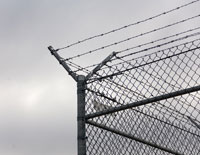“The United States will never be able to prosecute or incarcerate its way to being a safer nation,” said last week U.S. Attorney General Eric Holder, at a conference held by the Brennan Center for Justice at the New York University School of Law.
This sentiment is one shared by many around the country. As the federal government explores ways of reducing mass incarceration, a growing number of state lawmakers are leading the way toward reforms that allow those with addiction to be treated rather than criminalized, thereby freeing more law enforcement to address serious crimes.
Why are states doing this after decades of taking a tough-on-crime stance?
Well, it is simple. The immediate cost of criminalization and incarceration is high—in Ohio prison costs alone are nearly $1.5 billion a year. However, the long-term collateral costs to all of our communities is too great to quantify.
The 40-plus-year failed War on Drugs has resulted in some troubling consequences. Prisons and jails are dangerously overcrowded, millions of people are saddled with needless criminal convictions leaving employment and housing out of reach, children are separated from their parents, and entire communities are being destroyed.
Some lawmakers blame increased use of drugs for the incarceration crisis. To the contrary, wrongheaded laws and policies increasing penalties for drug use while simultaneously eliminating many treatment options for addiction and mental illness is the true culprit.
As other large prison states look to overhaul the way they respond to drug and low-level offenses in an effort to right the wrongs created by the War on Drugs as outlined in the book,
The New Jim Crow , some in Ohio are still very much committed to the costly war.
While other states are looking to treat drug possession as a misdemeanor instead of a felony, some in Ohio are looking to increase sentencing penalties for drug use.
While other states are looking to expand treatment options evenly across their state, some in Ohio think that prison, not treatment, is the best option.
If you don’t think that we need a new model in Ohio, take a look at the numbers.
According the Ohio Department of Rehabilitation and Corrections:
- 80 percent of those incarcerated in Ohio’s prisons have a documented history of alcohol and/or drug abuse.
- 41 percent of those entering prison have been convicted of low-level offenses.
- 25 percent of those admitted to prison did not break the law, rather they broke a probation rule.
- Approximately 56,000 children in Ohio have an incarcerated parent.
Ohio should not be left behind as other states take bold steps to stop over-criminalization and mass incarceration. As one of the top 10 prison states in the country, we cannot afford to continue on this path.
We have been tough on people and our budgets—too tough—and we have made things worse. It is time to leave the old punitive policies of the past behind and look toward new, fair, and effective solutions.

